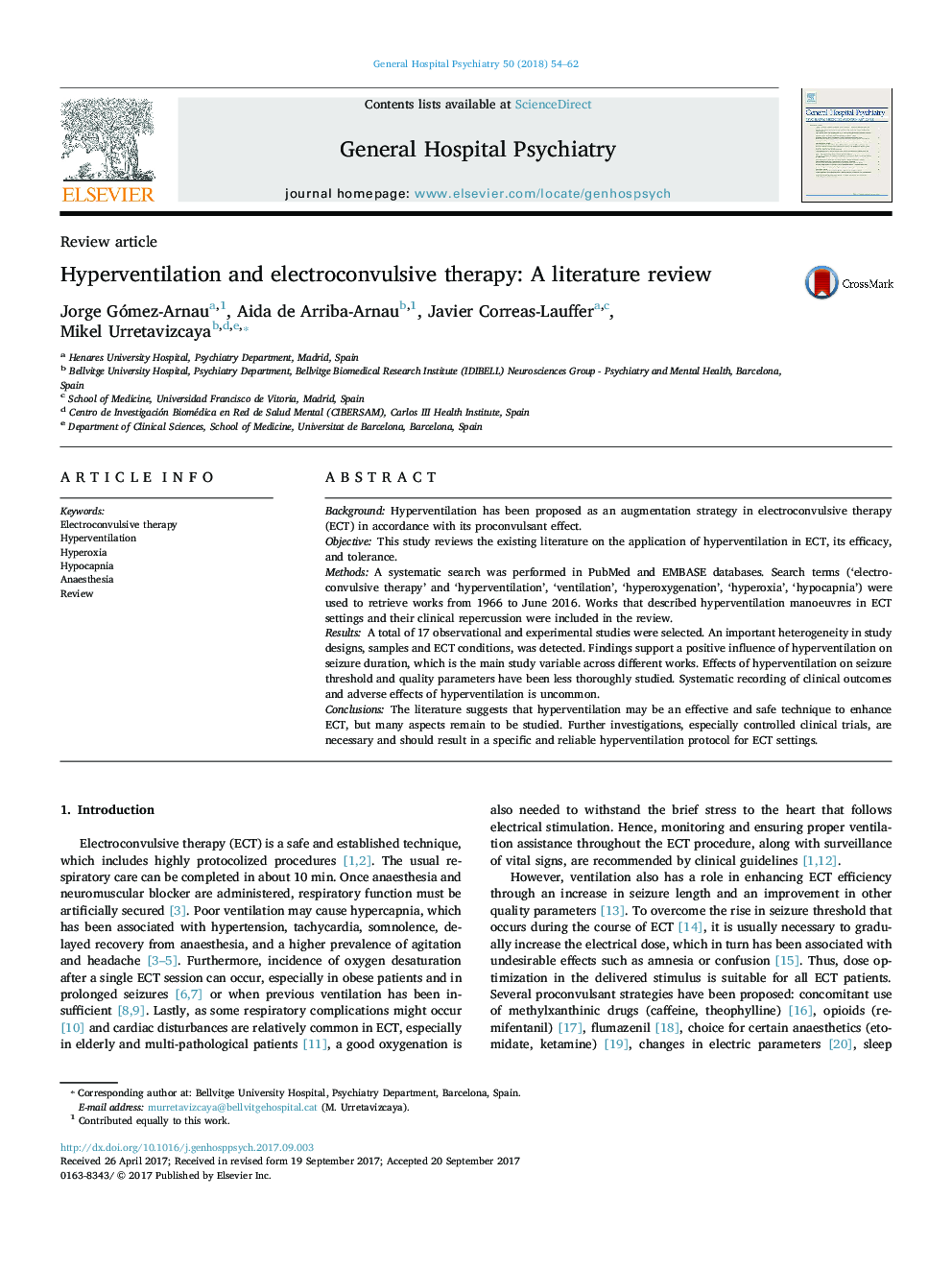| Article ID | Journal | Published Year | Pages | File Type |
|---|---|---|---|---|
| 5652297 | General Hospital Psychiatry | 2018 | 9 Pages |
BackgroundHyperventilation has been proposed as an augmentation strategy in electroconvulsive therapy (ECT) in accordance with its proconvulsant effect.ObjectiveThis study reviews the existing literature on the application of hyperventilation in ECT, its efficacy, and tolerance.MethodsA systematic search was performed in PubMed and EMBASE databases. Search terms ('electroconvulsive therapy' and 'hyperventilation', 'ventilation', 'hyperoxygenation', 'hyperoxia', 'hypocapnia') were used to retrieve works from 1966 to June 2016. Works that described hyperventilation manoeuvres in ECT settings and their clinical repercussion were included in the review.ResultsA total of 17 observational and experimental studies were selected. An important heterogeneity in study designs, samples and ECT conditions, was detected. Findings support a positive influence of hyperventilation on seizure duration, which is the main study variable across different works. Effects of hyperventilation on seizure threshold and quality parameters have been less thoroughly studied. Systematic recording of clinical outcomes and adverse effects of hyperventilation is uncommon.ConclusionsThe literature suggests that hyperventilation may be an effective and safe technique to enhance ECT, but many aspects remain to be studied. Further investigations, especially controlled clinical trials, are necessary and should result in a specific and reliable hyperventilation protocol for ECT settings.
